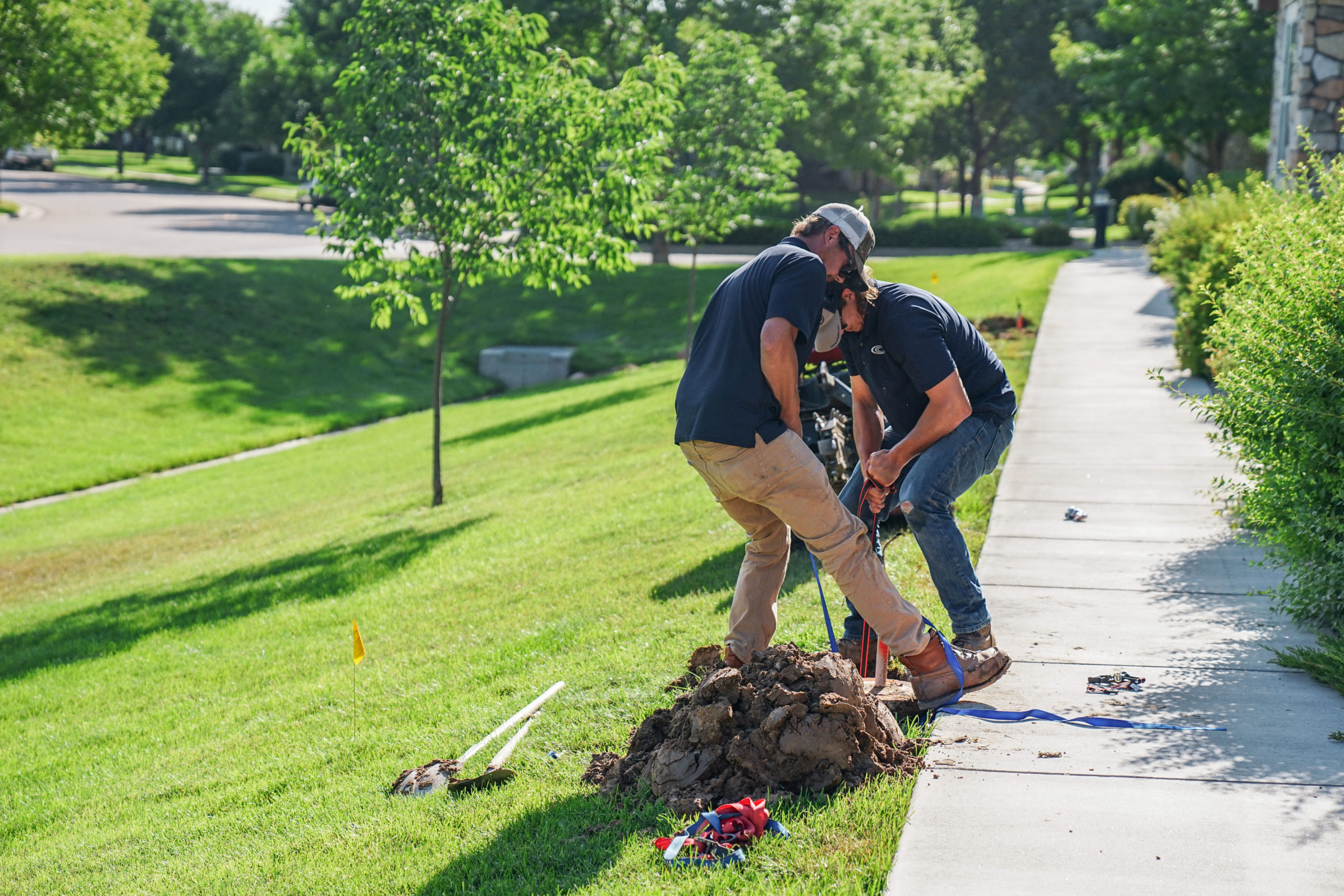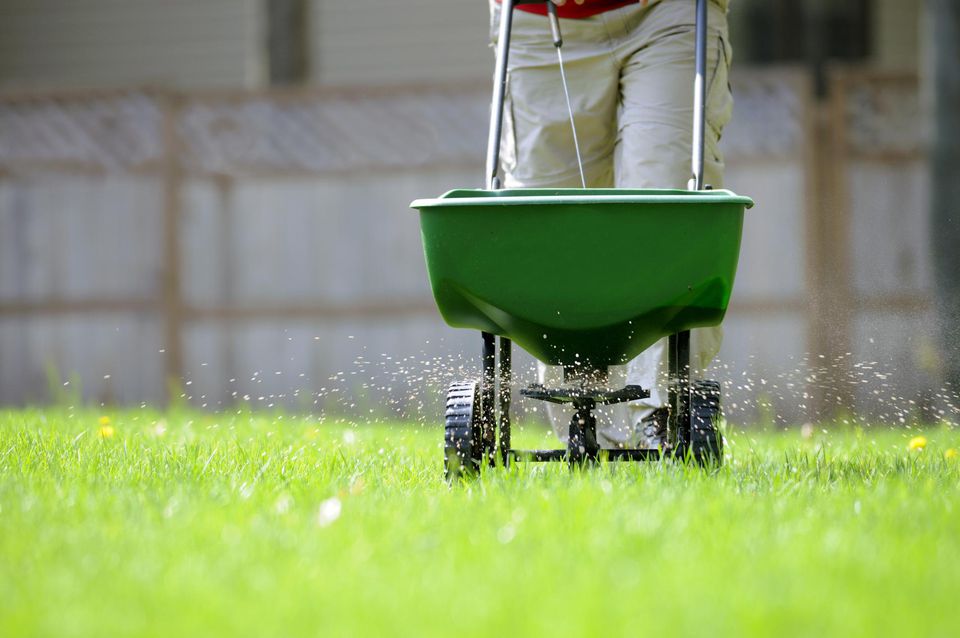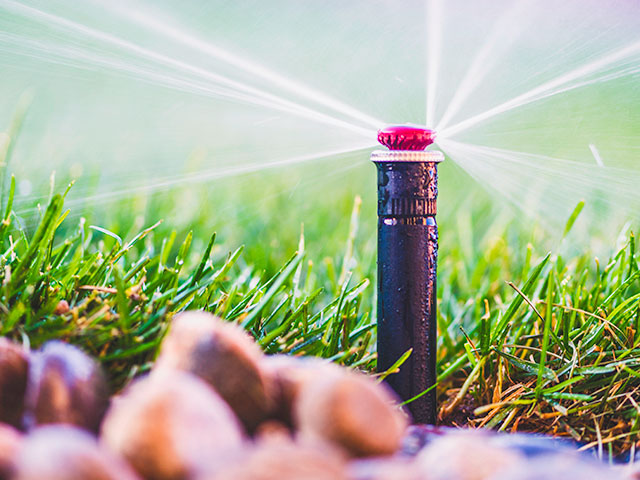Did you know? On average, most Colorado lawns need 1 to 1.5 inches of water via rainfall or irrigation per week to stay lush and green. That’s because water is an essential part of a happy, healthy lawn.
Our Colorado season changes can be a little extreme though – a cooler, wet spring can turn into a hot, dry summer in a matter of weeks (or days here!). The ground dries up, and along with it goes your nice green lawn.
But there’s no need to suffer at the hands of Colorado weather. Summer lawn care is about flexibility and strategy, so we’re here to give you all the tips for greener summer grass.
Let’s get into it.
Everything You Need to Know About Summertime Lawncare
One of the best ways to keep your lawn healthy during the hot months of summer? Get ahead of the game! It’s going to be much more difficult to react and remedy an issue than it would be to avoid it in the first place.
As mentioned above, water is a HUGE component and must be monitored closely. If you’re not sure that your grass is getting what it needs, we’ve outlined some warning signs below:
Your grass might be too dry if…
- You walk in the grass and notice your footprints leave a lasting imprint.
- Your grass has gone from a vibrant green color to a bluish-gray color.
- Your grass leaf blades are wilting and browning.
Whether it’s one of these or all three, you better reconsider your irrigation plan and incorporate more water into your summer lawn maintenance.
Now is a great time to start protecting your lawn, decorative shrubs, and trees for the hot, summer months ahead! We want to help you make an extra effort to keep these plants well hydrated and encourage strong healthy roots – and we’re starting with the basics.
Best Times to Water Your Grass in Colorado

While it may seem like you can water your lawn anytime during the day, your lawn actually needs more specific care.
For example: Watering in the afternoon is throwing water away to evaporation while watering at night invites disease (when water rests on your grass too long at night, this can cause all sorts of fungal diseases).
Also, hot and sunny afternoons are not ideal as the water may evaporate before the grass can absorb what it needs.
For summer lawn care, we recommend watering in the morning. The sweet spot is between 2 am and 8 am because…
- It’s cooler, and the winds tend to be calmer.
- Water can soak into the soil and be absorbed even before it can evaporate.
- Better overall water pressure.
- Little interference with outside activities.
Set the time and schedule on your sprinkler system, so the grass is watered on a routine schedule. This will ensure that each zone gets the amount of water it needs when they need it.
Quick Tip: The best plan of action is to calibrate your sprinkler system to run long enough to water each zone at least an inch. Also, allow sprinkler heads to overlap zones a bit to ensure adequate watering.
Get the Most Out of Your Sprinkler System

With a well-maintained sprinkler system and a little TLC, you can save time, money, and water all summer long.
Semi-regular sprinkler audits are a MUST, as they allow the experts to identify any potential issues, explore areas of improvement, fix broken equipment, and more. By scheduling these sprinkler check-ins, you save yourself in the long run.
Unexpected sprinkler repairs are expensive, but very urgent if you want to save your grass.
Quick Tip: If you’re looking for a low-maintenance sprinkler system, you should consider installing a smart controller. These systems are connected to weather stations so that they can adjust watering times based on current climate conditions such as temperature, wind, precipitation, and humidity.
To Fertilize or Not to Fertilize

Now, that is the question…
In the summer, you might have more time to focus on your lawn, making it a great time to fertilize. Here at All Terrain, we recommend a strict fertilization schedule to ensure your grass gets all the right nutrients at the right time.
If you’re looking for a fertilizer alternative, however, summer lawn food also works wonders. This formula is meant for hotter climates and maximizes moisture retention, making it a great option.
Caring for New Sod in the Summer?

If you’ve decided to plant new sod in the summer, you’ll want to take extra precautions to help it survive.
In the beginning (the first 3-4 weeks), it will need to stay moist, 4” – 6” deep. You will need to water it several times per day to allow the roots to penetrate the soil before pulling back a tad around the 3rd or 4th week. In the early stages, it is essential new sod gets plenty of water to grow and establish its roots.
Seek Professional Landscape Help
Your Colorado landscape and lawn deserve the best, and let’s face it: you just might not be the right person for the job. That’s totally okay because our team is available to help with design, installation, sprinkler repairs, and more.
If you still have questions, get in touch with our expert irrigation specialists to learn more.



